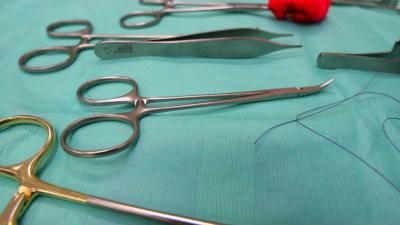Close monitoring
Bleeding under the dura mater is often caused by an accident. The consequences can be life-threatening, as the bleeding presses on the brain. There are two treatment methods to combat this. Emergency surgery is often chosen. A bone hatch is sawn out of the skull to remove the bleeding. Another treatment strategy is to closely monitor the patient in intensive or medium care. With this method, surgery can be performed at a later time if needed.
Need emergency surgery?
There is as yet no hard scientific evidence for when which treatment strategy is most appropriate. This is the reason that the frequency of surgery for such a patient differs per medical center in Europe. To investigate this issue, under the supervision of neurosurgeon Wilco Peul (LUMC & HMC) and neurosurgeon in training Thomas van Essen (LUMC), more than 1,400 patients with bleeding under the meninges were analysed. The research group looked at, among other things, patient characteristics, radiology abnormalities and blood values. They were able to draw on data from more than 60 European centers for this.
According to the researchers, the pros and cons of emergency surgery should always be carefully weighed. “A hemorrhage under the meninges is the most common traumatic brain hemorrhage. Neurosurgeons who prefer emergency surgery estimate that permanent brain damage can occur if no action is taken,” says Van Essen. There are also neurosurgeons who prefer conservative treatment with close monitoring. They do not want to expose the patient to brain surgery if they are not sure whether the emergency surgery has a high chance of preventing brain damage.
Quality of life and the elderly
The results of the study now show that patients treated in centers that prefer emergency surgery have no advantage over patients treated in centers that prefer conservative treatment. It follows that patients undergoing emergency surgery have no advantage over patients being monitored. The chosen treatment strategy in these cases therefore has no influence on the outcome of a patient. The results of the research have a direct influence on clinical practice, according to the neurosurgeons. If a neurosurgeon does not see a clear benefit in emergency surgery, conservative treatment may be initiated.
Threatening death
This finding does not apply to patients who are at risk of death within a short time if they are not operated on urgently, nor to patients with little or no bleeding symptoms. In the study, in addition to survival and functional outcome, Van Essen and colleagues also looked at length of hospitalization and quality of life among patients, six months after being hospitalized. Another striking finding was that patients older than 65 years have a better outcome after emergency surgery. This is currently being further investigated in a study in the Netherlands and Belgium with the aid of a ZonMW-KCE subsidy.
Cooperation partners
The study was conducted by 65 collaborating centers in Europe, with the LUMC, Haaglanden Medisch Centrum in the Netherlands. , Erasmus MC Rotterdam, Rijndam Rehabilitation, Radboud UMC Nijmegen, University Medical Center Groningen and Elizabeth-Tweesteden Hospital Tilburg. The analysis was performed by the LUMC, the HMC, Rijndam Rehabilitation, the Erasmus MC Rotterdam and the Radboud UMC Nijmegen, in collaboration with the University Hospital Antwerp, Heidelberg University Hospital, the Catholic University of Leuven and Cambridge University.
–


